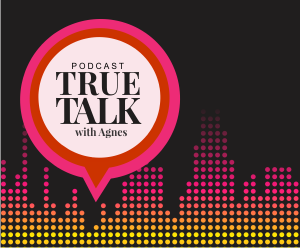Susan Wojcicki, YouTube’s chief executive and one of the most prominent women in Silicon Valley, said on Thursday that she was stepping down from her longtime role leading the internet’s most popular video service.
Ms. Wojcicki’s departure signifies an end to the early, pioneering days of YouTube and its parent company, Google, and adds to a lengthening list of women who have left senior roles at big Silicon Valley companies in recent years.
Google spent some of its early days headquartered in Ms. Wojcicki’s garage. A personal friend of Google’s founders, Larry Page and Sergey Brin, she became one of the company’s earliest employees and climbed its executive ranks over the past two decades. After Google acquired YouTube, Ms. Wojcicki, 54, helped turn the video platform into one of the world’s largest social media companies.
“Today, after nearly 25 years here, I’ve decided to step back from my role as the head of YouTube and start a new chapter focused on my family, health and personal projects I’m passionate about,” Ms. Wojcicki wrote in a letter to employees, which was published on YouTube’s official blog.
Neal Mohan, the company’s chief product officer, will take over as chief executive.
In a joint statement, Mr. Page and Mr. Brin said: “Susan has a unique place in Google history and has made the most incredible contribution to products used by people everywhere. We’re so grateful for all she’s done over the last 25 years.”
Andrea Faville, a YouTube spokeswoman, declined to comment on Ms. Wojcicki’s health. But in recent months, Ms. Wojcicki appeared to cut down on public appearances, such as missing a “Made on YouTube” event in September.
Ms. Wojcicki will remain as an adviser at Alphabet, Google’s parent company. Sundar Pichai, Alphabet’s chief executive, asked that she counsel businesses across the company’s portfolio at a time when artificial intelligence was poised to transform many of its products.
“Susan played a key role in Google’s origin story, and over the years her leadership opened up entirely new chapters for the company,” Mr. Pichai said in a statement. He added that there were “exciting opportunities” ahead for the platform.
Ms. Wojcicki’s exit from YouTube’s top job further thins the ranks of women running large tech companies. Sheryl Sandberg, who was chief operating officer at Meta, left her role last year. Meg Whitman, who led Hewlett-Packard and one of its successor companies; Ginni Rometty of IBM; and Marissa Mayer of Yahoo have also left senior roles in recent years. While Safra Catz remains chief executive of Oracle, a maker of business software, Jayshree Ullal runs Arista Networks and Lisa Su leads the chip maker AMD, the industry has lost a raft of women leaders who broke barriers, with few obvious female successors in sight.
“It’s a changing of the guard,” Laura Kray, a professor of leadership at the University of California, Berkeley, said in an interview. “The fact that these highly successful women leaders are being replaced by men is a disturbing trend.”
Professor Kray, the faculty director of the Center for Equity, Gender and Leadership, added that women’s careers in the tech industry tended to be shorter than men’s, and the loss of powerful female leaders shrank the number of role models for younger women in tech.
Despite tech companies’ emphasizing the need for more diverse leadership in recent years, the gender gap extends from large companies to small ones. More than half of American start-ups lacked women in leadership in 2020, according to a report from Silicon Valley Bank.
Diane Greene, the former chief executive of Google Cloud, said Ms. Wojcicki was synonymous with Google and helped build it into a juggernaut.
“She’s been visionary, she’s done phenomenal execution and she’s been extraordinarily supportive of other women,” Ms. Greene, now the chairman of the Massachusetts Institute of Technology, said in an interview.
Ms. Greene, who co-founded and once led the software maker VMware, said she was optimistic that a new generation of women currently making their marks as scientists and academics will help lead the tech industry in the coming years.
Mr. Mohan came to Google from DoubleClick, an advertising technology company acquired by Google in 2007, and eventually rose to be a senior vice president of video and display ads. He became YouTube’s chief product officer in 2015 and has overseen trust and safety efforts and the launches of major products, including YouTube Music and Shorts, Ms. Wojcicki wrote in her note on Thursday.
Mr. Mohan inherits YouTube during a challenging period. The company is contending with a slowdown in digital advertising that has halted its growth, and it faces increasing competition from TikTok, a Chinese-owned short video service.
YouTube added its own short-video feature, Shorts, to compete, and it has tried to become a destination for more premium content by offering cable television programs and the N.F.L. Sunday Ticket, a package of weekly football games. Mr. Pichai said this month that Shorts was now averaging 50 billion daily views. The service has also begun running ads and sharing revenue with creators on the platform, an effort to lure influencers away from TikTok.
YouTube has recently lost several prominent executives, including Robert Kyncl, who was chief business officer before leaving at the start of the year to become the chief executive of Warner Music Group, and Martin Kon, YouTube’s business finance officer, who departed for the A.I. start-up Cohere.
“I have never in my career met a C.E.O. like Susan,” Mr. Kon, who is now Cohere’s president and chief operating officer, said in an interview. “She was able to go back and forth with engineers, with data scientists, with partnerships people, with marketing people on the details of what they’re doing.”
The bulk of YouTube’s revenue comes from ads that run before, during and alongside videos. In the third quarter, the company’s ad sales declined 1.9 percent from a year earlier. Last quarter, revenue dropped 8 percent, to $7.96 billion.
The platform has long been keen to diversify its business and has prioritized efforts to expand its content subscriptions. YouTube said in November that it had 80 million paid subscribers for its music and premium services, a jump of 30 million from the previous year.
The platform also offers YouTube TV, a bundle of streaming television channels to replace cable packages. YouTube TV has more than five million subscribers, the company has said. YouTube does not disclose the revenue it generates from subscriptions.























